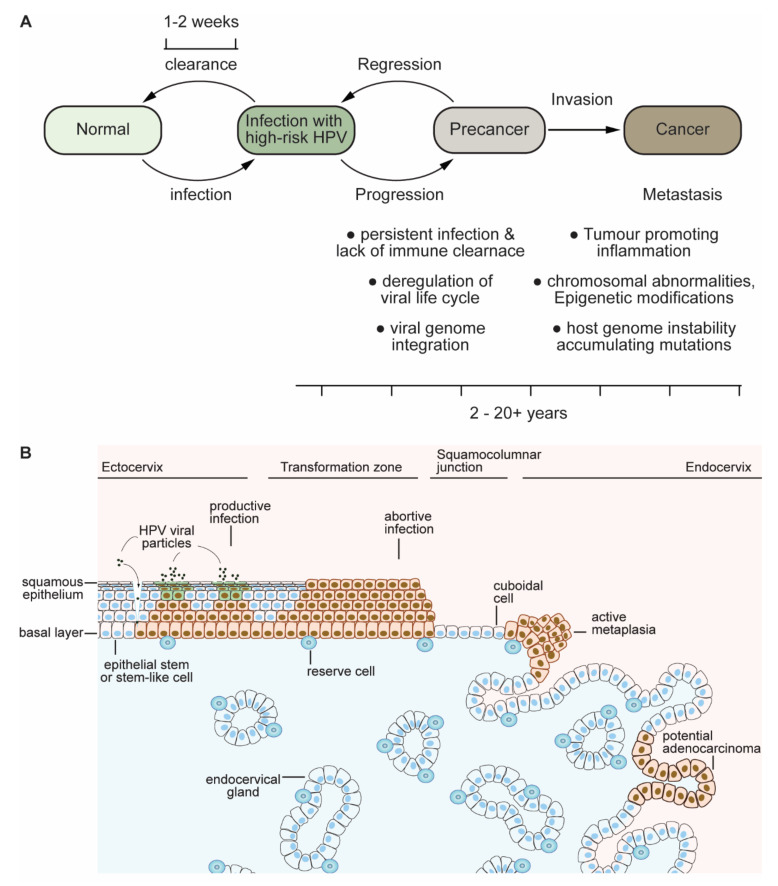Figure 2.
From infection to the development of cancer and malignancy, mediated by HPV (adapted and modified from References [22,23]. (A) Infection with HPV is normally cleared with 1 to 2 weeks; however, in certain individuals, persistent infection and a lack of immune clearance can lead to deregulation of the viral life cycle and viral genome integration, making them major risk factors for tumour development and progression towards cancer and malignancy. The progression towards invasive cancer and metastasis involves several changes, including chromosomal abnormalities, epigenetic modifications, genome instability and accumulating mutations and tumour-promoting inflammation, taking 2 to 20-plus years. (B) A cartoon representing infection by HPVs and progression to cancer. Infection with HPV is thought to occur via microtraumas in the epithelium, allowing access of the virus to the basal cell layer. HPV maintains its genome in the basal cells, and, as these cell divide, there is coordinated expression of early viral proteins, including E6 and E7, that allows the differentiation-determined cells to reinitiate the cell cycle. As these cells reach the upper squamous layers, with a concomitant expression of viral late gene products L1 and L2, new virions are released upon desquamation. Various regions of the cervix composed of stratified epithelium of the ectocervix, the transformation zone and the columnar epithelium of the cervix and endocervix are indicated in the cartoon, suggesting major sites of productive infections leading to the release of viral particles and abortive infection associated with deregulated HPV gene expression, potentially leading to squamous cell carcinoma and adenocarcinoma.

